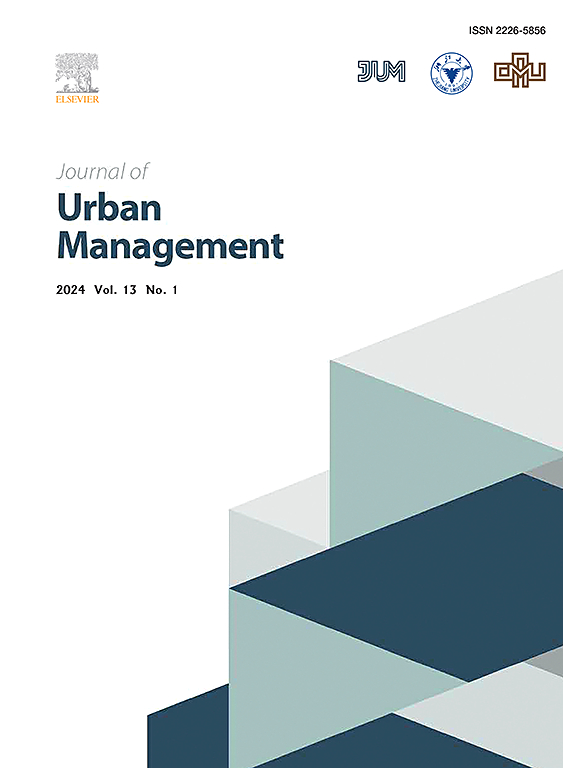通过人的流动性和虚拟空间发现城市格局
IF 5
2区 社会学
Q1 URBAN STUDIES
引用次数: 0
摘要
公民在社交媒体上的活动反映了他们的运动,这有助于捕捉人类的流动性,并可以使这一领域的解释性序列研究向前迈出一大步。本研究调查了人类流动性研究区域的三个阶段侧面出现的三角形模式。主要的问题是,世界城市的人口流动模式没有得到适当的认识。为了回答“基于三角形模型的德黑兰城市人口流动模式是什么?”,将人的流动性分为4类:工作、教育、购物和休闲,这是城市中最需要的。因此,三角形人类流动模式的侧面呈现在3个社会空间、社会时间和时空部分。在对以上4类人的流动性进行识别后,根据不同的案例,作为一个可以在世界各地的城市中进行的简单实验,将以上4类人分开,识别为城市空间中人的流动性的三角形。在这一分析中,我们发现购物、教育和休闲之间的关系是密切而相互关联的,工作、教育和购物活动也是相互关联的。本文章由计算机程序翻译,如有差异,请以英文原文为准。
Discovering the urban pattern through human mobility and virtual space
Citizens' activities on social media reflect their movements, which lends itself to capturing human mobility and can take explanatory sequential research in this area a big step forward. This research investigates the triangular pattern that emerges from the 3 phase sides of the human mobility study area. The main problem is that the pattern of human mobility in the world's cities is not properly recognized. To answer the question “What is the pattern of human mobility in the city of Tehran based on the triangular model?”, human mobility is divided into 4 categories: Job, Education, Shopping, and Leisure, which are the most demanded in the city. Therefore, the sides of the triangular human mobility pattern are presented in 3 socio-spatial, socio-temporal, and temporal-spatial sections. With the identification of human mobility in the above 4 categories, from case to case and as a simple experiment that can be conducted in the cities around the world the above 4 categories were separated and identified as triangles of human mobility in urban space. In this analysis, it was found that the relationships between shopping, education, and leisure are close and interrelated, and the activities of job, education, and shopping are also interrelated.
求助全文
通过发布文献求助,成功后即可免费获取论文全文。
去求助
来源期刊

Journal of Urban Management
URBAN STUDIES-
CiteScore
9.50
自引率
4.90%
发文量
45
审稿时长
65 days
期刊介绍:
Journal of Urban Management (JUM) is the Official Journal of Zhejiang University and the Chinese Association of Urban Management, an international, peer-reviewed open access journal covering planning, administering, regulating, and governing urban complexity.
JUM has its two-fold aims set to integrate the studies across fields in urban planning and management, as well as to provide a more holistic perspective on problem solving.
1) Explore innovative management skills for taming thorny problems that arise with global urbanization
2) Provide a platform to deal with urban affairs whose solutions must be looked at from an interdisciplinary perspective.
 求助内容:
求助内容: 应助结果提醒方式:
应助结果提醒方式:


